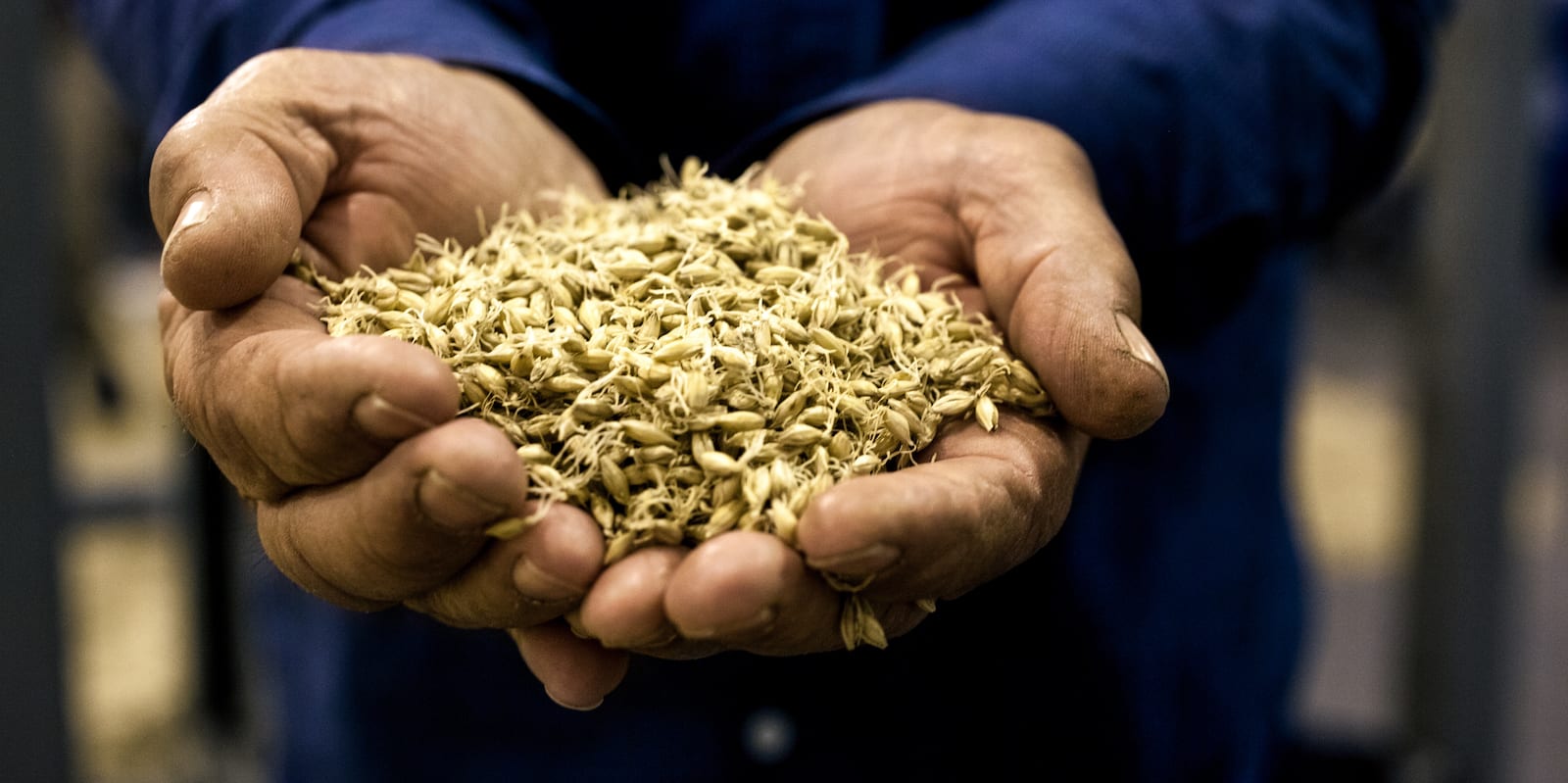North Carolina’s Riverbend Malt House is Helping Brewers Keep It Local
The story of the Southeast’s burgeoning craft malt industry begins in a basement in Western North Carolina. In the domestic underbelly of his home, geologist Brian Simpson jerry-rigged his first kiln, a modified meat smoker he called the “Maltotron 5000.” It was an experiment to make locally-crafted malt with his long-time biologist friend and professional peer, Brent Manning.
“Malt is the soul of beer,” says Simpson. Made from grain that has endured a three-step process—steeping, germination, and kilning—it serves as one of the four pillars of a beer recipe. From the Maltotron 5000, Simpson produced ten-pound batches of homespun malt, and Manning brewed five-gallon batches of home brew.
The two friends met while working at an environmental consulting firm in Wilmington, North Carolina. The depressed housing market had taken its toll on their respective trades, so they relocated to the mountains of Asheville in search of encore careers. They settled into their new hometown, all the while soaking up Asheville’s rapidly-growing craft beer scene.
“We started looking at what was happening in the sphere of craft beer,” says Manning. “Where are ingredients coming from? What’s the bigger picture? How do we get our farmers involved in this? We had a mutual interest in sustainability.”

Simpson had a short stint working for a local land trust and stumbled upon the small grains scene in North Carolina. The state is the Southeast’s leading producer of small grains. There are four main ingredients in beer: hops, grain, yeast, and water. Yet no craft brewer was using locally-grown and malted grain, one of the biggest components of a beer recipe. It didn’t take long to connect the dots.
“When we were looking at this from 30,000 feet,” says Manning. “We had a state that produced 20,000 acres of barley and several hundred thousand acres of wheat. We had an ag extension and all these resources, but we had no malt house connecting the farmer to craft beer.”
Enter the Maltotron 5000 and a barley with a bad reputation. The South primarily produces six-row barley, on that’s not widely known for its ability to impart much flavor, but is typically associated with big beer. Macro-breweries use six-row barley for its enzymatic qualities to convert the starches in the surplus of corn and rice that fill their swill. Craft brewers, on the other hand, are inclined toward two-row barley for its prized plump kernels.
We had a state that produced 20,000 acres of barley and several hundred thousand acres of wheat. We had an ag extension and all these resources, but we had no malt house connecting the farmer to craft beer.”
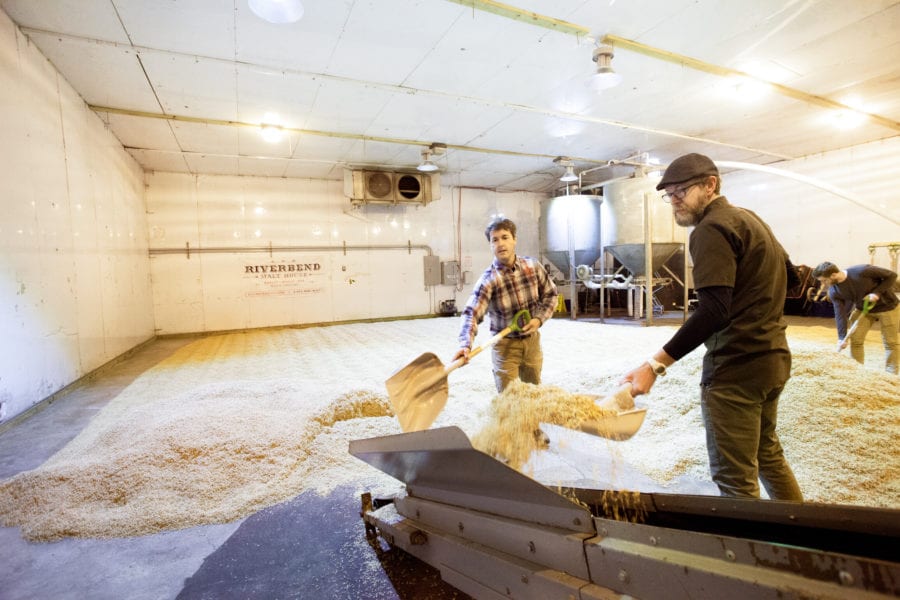
“If you talk to the researchers at North Dakota State, they’ll jokingly tell you they’ve been breeding the flavor out of barley for twenty years because that’s what big beer wanted, a sugar delivery system,” says Manning. But in North Carolina, six-row barley is a viable crop. It came down to agriculture. The two-row spring barley, grown in places like North Dakota, did not fare well in the Southeast. But a six-row variety called Thoroughbred did. Even Manning, who studiously pored over home-brewing literature, was skeptical.
In partnership with the NC State Cooperative Extension and the USDA Agricultural Research Service, Manning and Simpson began running test batches in their makeshift kiln and brewed really good beer, even taking home the winning title at a home brewing competition. That “a-ha” moment, that six-row barley could produce great beer, turned the tide.

The next revelation occurred in Virginia at a whiskey distillery. Since 2005, Rick Wasmund of Copper Fox Distillery has been hand-malting and distilling Thoroughbred to make award-winning whiskey. Wasmund employs a pre-industrial technique called floor-malting. After the grain has been steeped and hydrated (the first step in malting), it is spread out on the floor and raked by hand to facilitate the all-important germination process before it is kilned and dried. Floor-malting was widely used in the Czech Republic, Germany, and the United Kingdom, and is responsible for a richer, more aromatic flavor than its mechanized kin.
In 2010, Manning and Simpson felt confident enough to contract twenty acres of Thoroughbred to be grown for local malt production. This, Manning says, was the moment they jumped out of the plane. “We didn’t have a place to put it, didn’t know how to malt at a commercial scale, and we didn’t have any money,” he says.
By 2011, Riverbend Malt House had an investor on board, a lease on a 2,000-square-foot space, and a ticket to Winnipeg, Canada for a crash course in malting at the Canadian Malting Barley Technical Center. Outside of Europe, this was the closest place to learn the craft. They returned to North Carolina with a phone book-sized textbook filled with the scientific nuances of malt-making and heads full of training. The first batch of Riverbend malt was produced in November 2011 and sold to North Carolina’s oldest micro-brewery, Weeping Radish. “It was a whopping 1,200 pounds,” Manning says sarcastically. Weeping Radish created a Christmas dopplebock with Riverbend’s inaugural product. “We were off to the races,” says Manning.
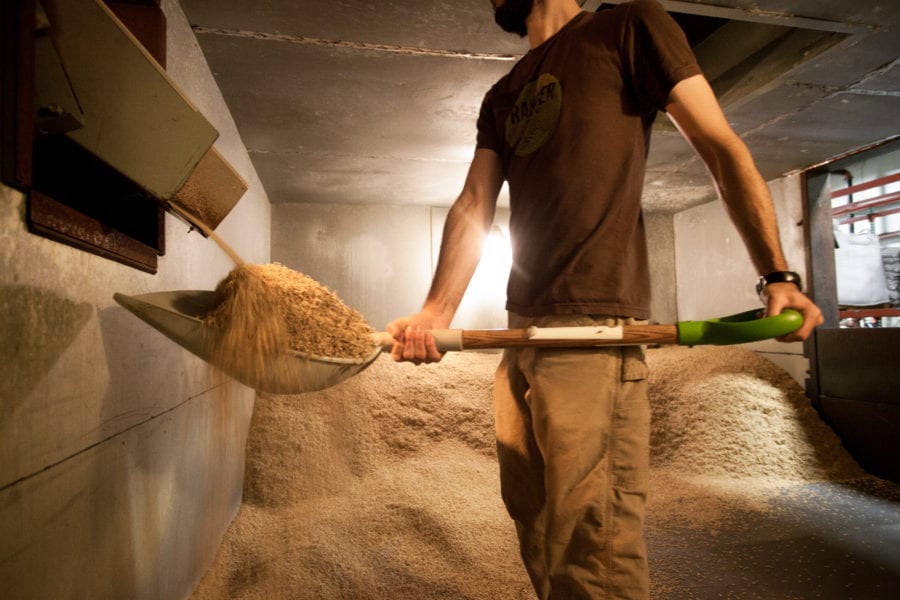
Durham’s Fullsteam Brewery was another early adopter of Riverbend malt, releasing its El Toro Cream Ale brewed with Riverbend malt and corn grits, which is now offered year-round. Fullsteam founder Sean Lilly Wilson, who is known for touting the slogan of brewing “distinctly Southern beer,” sees Riverbend as a natural fit for continuing his stated mission of pioneering a Southern beer economy. “We’ve said it from the beginning,” says Wilson. “The biggest challenge for brewers is that people don’t think of beer as an agricultural product.”
Wilson often asks people to close their eyes and visualize a winery, to which people conjure up images of rolling hills and verdant vines. When he does the same for beer, the images that come up are more stark—large steel vats, and industrial equipment. He says, “North Carolina has a strong agricultural tradition, and beer is made from these grains.” For him, Riverbend is a key part in connecting the dots from plow to pint.
For the first time in the Southeast, craft brewers could get their hands on regionally specific grains grown and hand-malted within a 500-mile radius of their establishments. More than that, Riverbend delved into indigenous heirloom grains like the Wrens Abruzzi rye, introduced to them by Jennifer Lapidus, owner and miller at Carolina Ground Flour Mill. She connected Riverbend to farmers in her network, who began growing this robust, peppery rye for malt production. Wrens Abruzzi caught the attention of New Belgium Brewing in 2013, who had just expanded into Asheville. The resulting RyePA, says Manning, became one of the first nationally distributed beers with craft malt in it.
CRAFTING TERROIR
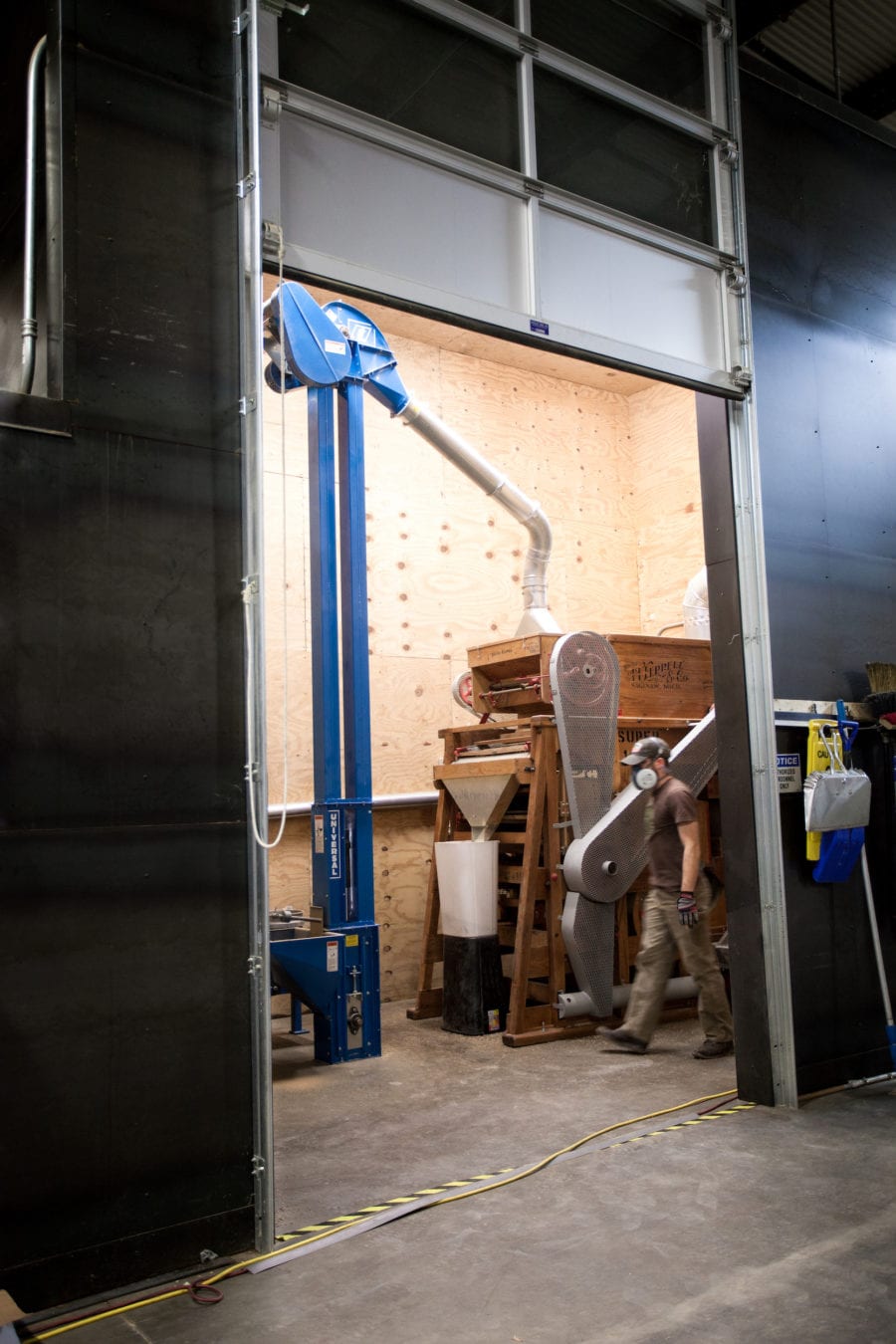
The magic of the maltster lies in one’s ability to create nuanced flavors through the manipulation of temperature, time, and moisture content during the various stages of the malting process. Shorter times on the malting floor produce less sweetness while longer times increase it. In the kiln, one can derive syrupy notes or those of toasted bread crust with the application of high heat. From the Thoroughbred variety, Riverbend creates three distinct products—pilsner, pale, and heritage malt—all prized for their spectrum of flavors, from grassy to light caramel.
And for craft brewers, flavor is the holy grail. “The best-tasting dish wins,” says Ryan Coker, owner and head brewer at Revelry Brewing in Charleston, South Carolina. “Riverbend is giving us options for flavor, specifically, local flavor.” In the craft beer world, the buzz is all about creating beer with a sense of place—terroir. The closer, the better.
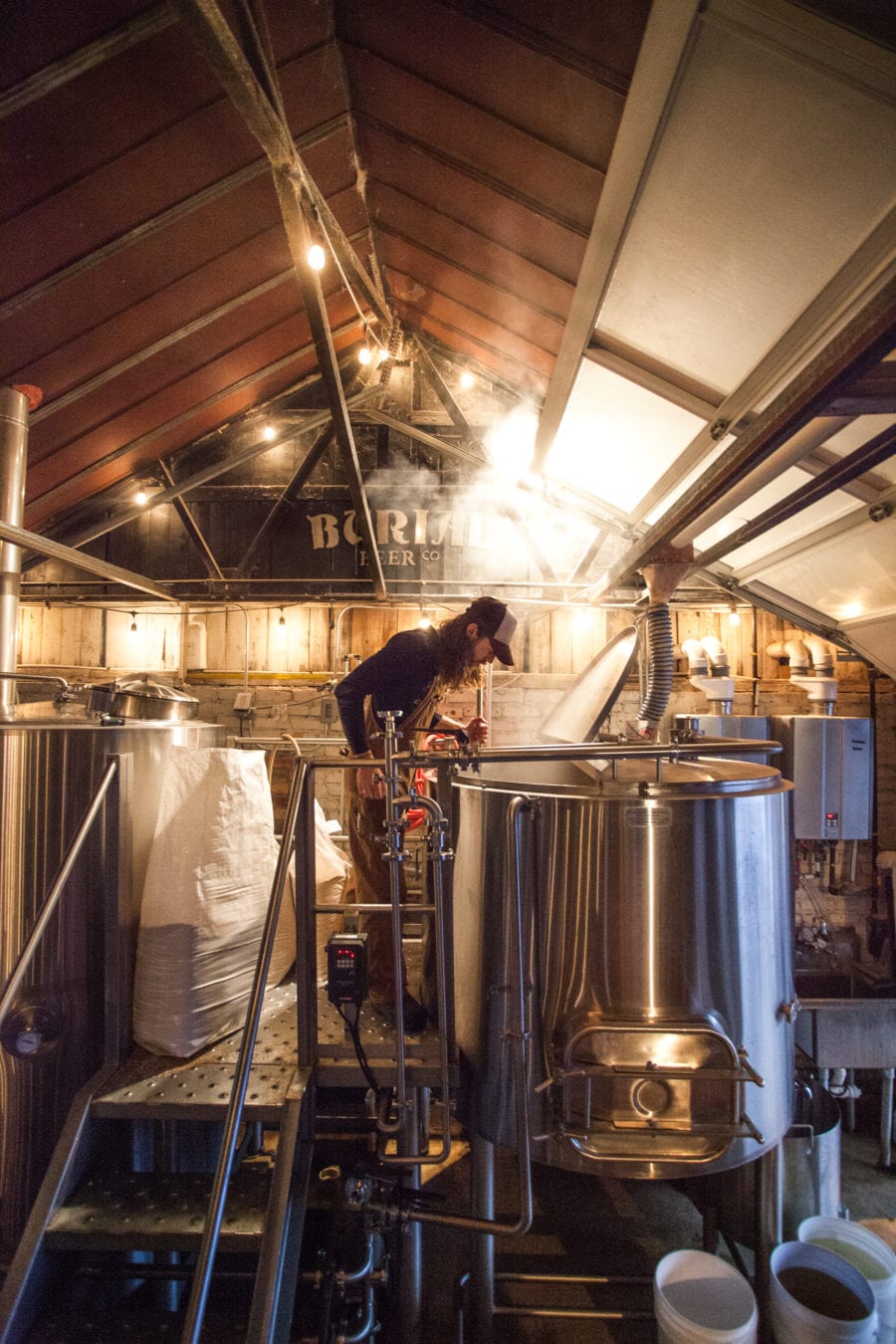
This year, Riverbend partnered with Revelry to malt a rye variety native to Edisto Island, South Carolina, called Seashore Black. In partnership with Geechee Boy Mills, who grew this particular variety on its property, Riverbend successfully malted this heirloom grain, adding an even more nuanced “taste of place” to its client’s toolbox.
In Asheville, Tim Gormley, head brewer at Burial Beer Co., was just wrapping up a three-day brew session of the Keeper’s Veil Honey Saison, brewed with Riverbend’s pilsner and wheat malts, along with eighty-five pounds of wildflower honey per batch and a mixture of dried chamomile and hibiscus flowers. “I love using their grains for saisons specifically,” says Gormley. An artisan brewer to the nth degree, He loves to manually mash his malt, waxing poetic when he describes the distinct aroma of Riverbend’s products. “It has this earthy, rustic quality. Using Riverbend is like an artist with his colors. You can craft your perfect vision, that specific shade or flavor.”
An hour east of Asheville, Newgrass Brewing in Shelby, North Carolina, recently canned its Carolina Uncommon for distribution, a rye saison brewed with 100 percent pilsner and rye malt from its Asheville neighbor. “We could get malt from the Upper Midwest or Europe with a more neutral flavor,” says Lewis McCallister, brewmaster at Newgrass, “but we appreciate the rustic, grainy character of Riverbend.”
Standing in the 10,000-square-foot Asheville warehouse that is Riverbend Malt House 2.0, the Maltotron 5000 remains, albeit retired in a quiet corner of the facility. Riverbend now produces 8,000-pound batches of malt, and about 50,000-60,000 finished pounds a month. Quite a large jump, but still not nearly enough to meet the demand of craft brewers itching to get their hands on a locally-crafted malt. Another expansion is on the way.
Riverbend currently contracts approximately twelve growers in Kentucky, North Carolina, Tennessee, and Virginia to grow barley, wheat, and rye for its malt products. Through Manning and Simpson’s work, Thoroughbred is now a recognized malted barley with the American Malting Barley Association, defying the long-held stigma that six-row wasn’t up to snuff.
It has this earthy, rustic quality. Using Riverbend is like an artist with his colors. You can craft your perfect vision, that specific shade or flavor.”
“I think their six-row is more flavorful,” says Todd Boera, brewer and owner of Fonta Flora Brewery in Morganton, North Carolina, who uses upward of 80 percent Riverbend malt in his stable of beers. For him, it’s about working intimately with ingredients and brewing with that sense of place: in this case, malt from less than sixty miles away. Back in Charleston, Cameron Reed, brewer at Edmund’s Oast says, “It’s about having access to what makes beer, beer.”
The connection between farmer, maltster, and brewer is now pulsing through the veins of craft beer, and Riverbend’s work has blown open the doors for the craft malt industry. “When we started,” Manning says, “there were three or four others in the nation. Now there’s sixty in operation and another sixty in planning.” We’ll drink to that.
share
trending content
-
Fall Pastries & Pints in Sevierville, Tennessee
-
Southern Makers: Better Together
-
Flavor Redefined in Huntington, West Virginia
by TLP's Partners -
Our Guide to Top Culinary Towns
by TLP Editors -
Get to Know Lafayette, Louisiana | Listen
More From Drinks
-
8 Wines for Late Summer Sipping
-
7 Wines for Sipping Outside
-
Wines You Should be Drinking in 2024
-
Bartender’s Tips for Frozen Cocktails
-
Bold, Batch-Sized Low-Alcohol Drinks





